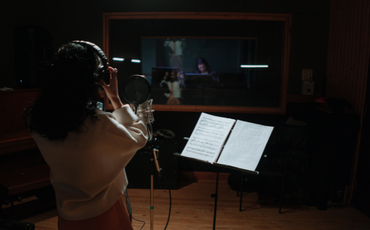The music industry is constantly changing. Read this blog to find out how the music industry has evolved over the past decade.

The History of Jazz and How the Its Future Looks
Listening to jazz is a transcendental experience for many contemporary music connoisseurs. Writer and jazz musician Michael Stephans describes in his book, Experiencing Jazz: A Listener’s Companion, that jazz is a constantly changing art form. It created a pleasurable feeling in the listener, making them swoon and feel the essence of the rhythm along with the artist—it’s not a solo experience.
There’s no doubt about the vibrancy and the liveliness of jazz. Even now, after 61 years of its release, Miles Davis’ Kind Of Blue remains in the top 3 of the Billboard’s Jazz Albums – and numerous artists are following in his steps to make this form of music. Let’s run through the history of one of the most well known and influential music genres in the world of music .
Origins of Jazz
Just like many other genres of music, jazz emerged from the US, in New Orleans, Louisiana in the early 20th century. This music genre was an amalgamation of the brass band, marches, French quadrilles, ragtime, and the blues. This music was greatly inspired by the hymns and working songs of African American slaves in the Southern part of the US, which they used to sing in the fields picking up cotton. In the 1900s, it started to get picked up by white critics. Many artists like Louie Armstrong, Charlie Parker, and Dizzie Gillespie played this music in clubs and it was the kind of music you could swing dance to.
The Sound of Freedom
Following the post-Civil War and the Emancipation era, this genre of music started to develop, when the slaves were finally able to flow freely and spread their tonality and rhythm. With Civil War Army musical instruments, African-American artists created revolutionary music that had brass bands tunes, ragtime syncopation, and a unique style of improvisation.
When you start to look at the historical aspect of jazz, it becomes obvious how this music echoes the individualism of those slave workers, their freedom and the cultural diversity of the US. Jazz was also the reason many other genres of music came into being – including rock and roll, R&B, hip-hop, pop music and more.
Racial Barriers
Jazz faced many racial barriers before it came into being. This genre became so popular so quickly that several white music composers tried to claim they invented jazz. This is when the wider distribution of jazz music was complicated because a majority of the people controlling the recording industry were white. Many white people termed jazz as Voodoo music and discouraged people to listen to it.
But jazz flourished and started to be played in many nightclubs, and run-down urban areas influencing the pop music of America. Even South American music was inspired by jazz and created many bops that are still timeless favorites today.
When jazz started as a genre, it was just an unadulterated blend of instruments like the saxophone, trumpet, and other brass instruments. But many daring artists like Louis Armstrong invented several new musical techniques like a singing style called scat. Scatting was a style of singing that implied that the artist would sing a string of nonsensical words that were in line with the rhythm being played.
If you’re ever wondering about how bold Louis Armstrong was, he used to play jazz when it was illegal! He was also a lyrical genius who used to write wholesome lyrics mainly about love and nature. One of the most popular songs Armstrong created was “What a Wonderful World” which is still danced to today in many famous clubs.
The Future of Jazz
Many people think jazz as a music genre has gone obsolete, but jazz is nothing short of legendary. This genre is known as the root of all music genres and can never cease to exist as it still inspires 21st-century musicians. Younger generations have strayed away from the traditional form of jazz but the essence of jazz is still very much alive.
Emmy-award-winning artists like Robert Glasper and Mary Halvorson have worked with renowned artists like Stevie Wonder and Anthony Braxton to keep the spirit of jazz very much alive.
Jazz Empowers Young Artists
A Ph.D. student Kim Nalley accentuated about her experience as Black jazz singer in a euro-centric world.She talks about how black women face inequity in the professional world but the day she started to sing jazz, it provided her the freedom she had yearned for ages.
Nu Jazz
The future of jazz is looking very bright – 21st-century musicians plan to incorporate the traditional methods of jazz and use them to get inspired, modify them with technology and electric music. A new form of jazz called Nu jazz is a nascent genre that’s a mixture of jazz and electronic music and free improvisation. Computer and electronic instruments can enhance the jazz experience, adding spice to the natural flow of the music and allows the artists to be very creative.
More Recognition
One of the most progressive changes with jazz that could happen today is the wide range distribution of the music, and the awareness of its historical importance. This is how black people can find more meaning and empowerment through the music of their ancestors.
The efforts of those legendary jazz artists persists, their spirit lives on through their music and still affects the opportunities of performers and musical composers today. Jazz has not only helped people of color across racial barriers but gave them the recognition that these artists deserved.
Will jazz become a mere relic of the past? Or will it be continued to be renewed and enhanced to suit the ever-changing form of music?
Jazz is the sound of working-class people, the sound that has liberated black people from many racial barriers in the music industry, and is proof of their struggle. Recently jazz has been introduced to many college curriculums in top universities. This will help educate children about the growth and struggle of this genre across the ages.
Are You Ready to Be A Jazz Singer?
You’ll hear it from the older generation that giving up on their dreams was probably their biggest regret in life, so why not learn from their mistakes?
The skills we develop much earlier in life prove to be much more useful later in the future and significantly make you happier.
This is why The Young Musician Music Institute is committed to helping young artists achieve all of their musical dreams. Whether you’re looking to become a renowned jazz musician or work on your vocals to become an awe-inspiring singer, TYMMI can help!
Our esteemed teachers are award-winning musicians handpicked for their excellent abilities. They will help you master the musical instruments by teaching guitar lessons, piano lessons, violin lessons, drum lessons, and much more!
The saxophone lessons are aimed at the contemporary and modern forms of jazz and you will be learning from the best jazz teachers at the institute. Our institute caters to musicians of all ages. Whether you have a child prodigy who’s looking to play the instrument or you want to polish your music skills, our courses are designed to help people of all ages.
TYMMI is also affiliated with the Trinity College of London and prepares its students for the prestigious Trinity certificate exams. So if you’re looking to get affordable music diploma courses at the most sought-out music institute in Abu Dhabi, sign up at The Young Musician Music Institute. Our music courses are designed to polish your skills and help you become an expert musician in no time.
Reach out to us today to learn more about our music courses and get enrolled in one of our musical instrument or singing classes in Abu Dhabi, UAE! Contact us now to learn more.




